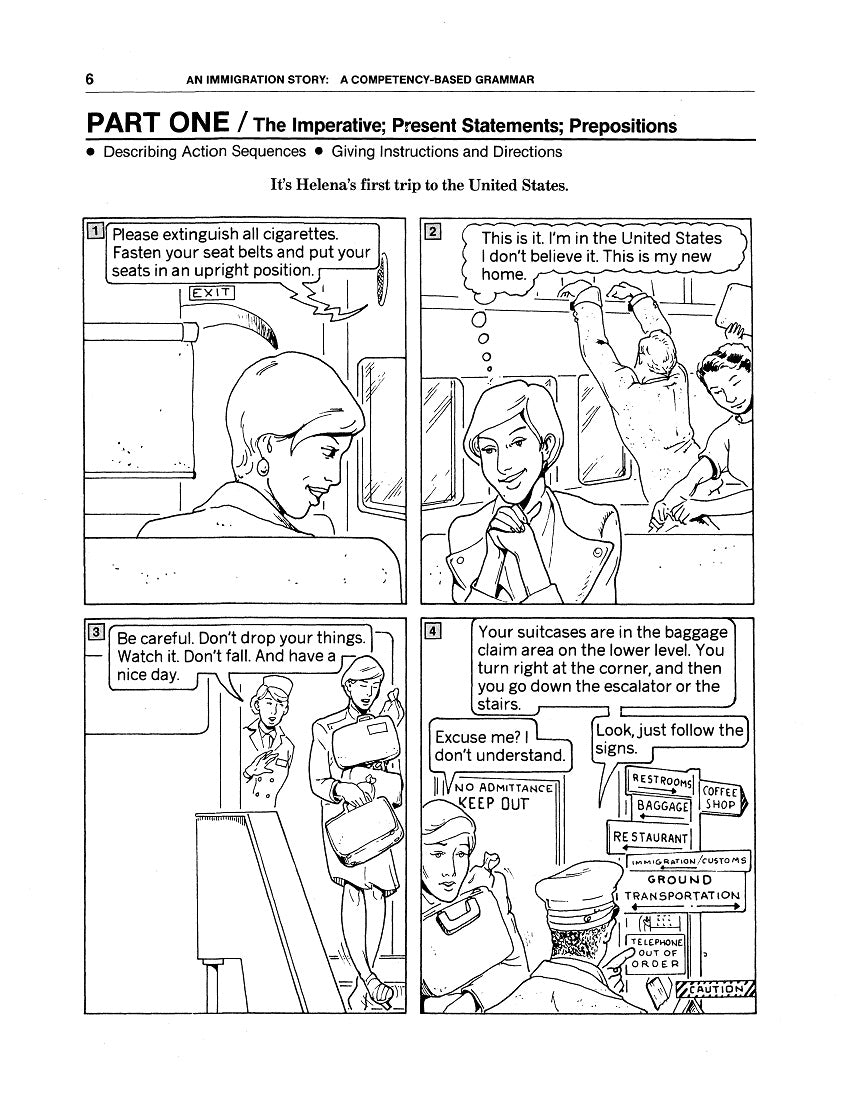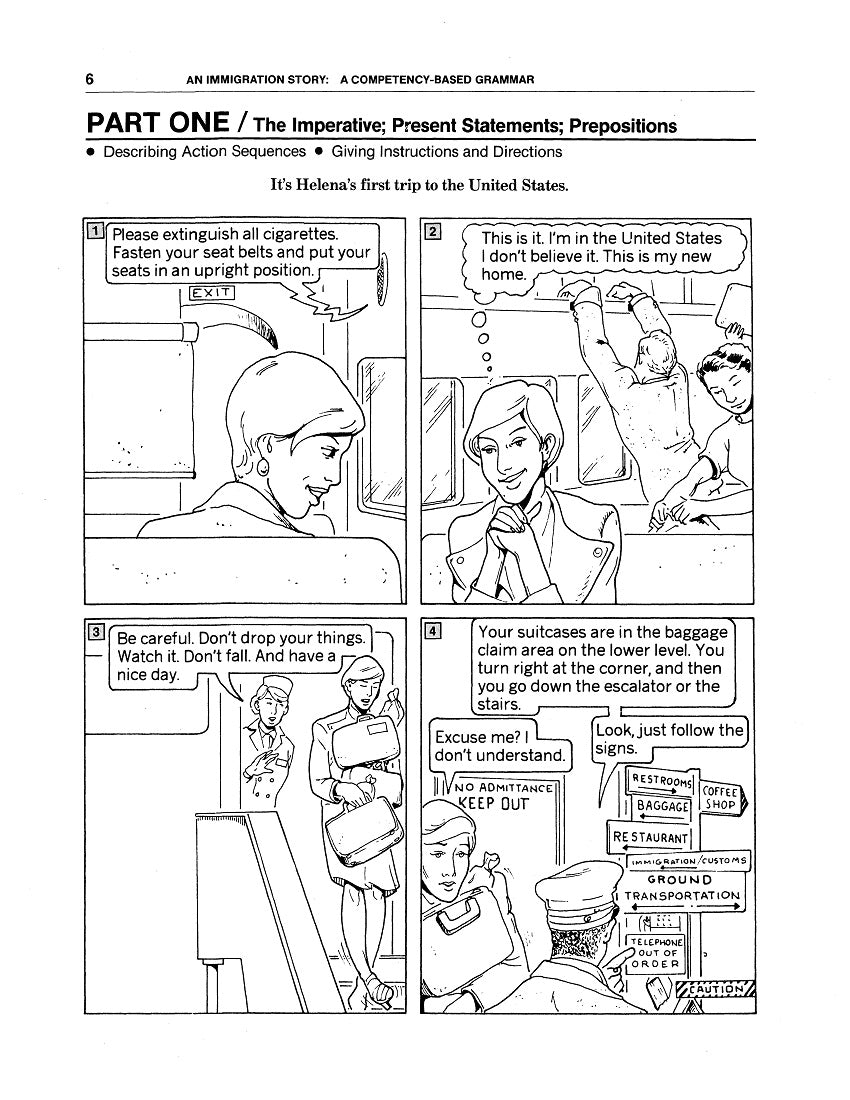1
/
of
1
Work/Life English
D-02.03 Use Base Verbs in Imperatives & Present Statements
D-02.03 Use Base Verbs in Imperatives & Present Statements
Regular price
$0.00 USD
Regular price
Sale price
$0.00 USD
Unit price
/
per
Part One of Chapter 1 (“The Arrival”) of WorkLife English Grammar 3: An Immigration Story
4pages
Who It’s For: (Teachers & Helpers of) High-Beginning or Low-Intermediate Language Learners
Why It’s Useful: The Total Physical Response (TPR) approach to language and vocabulary teaching works at various levels of student proficiency. Also, “Describing Action Sequences” and “Giving Instructions & Directions” are common Competencies at the beginning of instruction, especially when they involve travel or entering into new situations.
What You’ll Do:
[1] With participants, act out and read aloud the Strip-Story on page 6, “It’s Helena’s First Trip to the United States.” Notice how common imperative-verb phrases are when progressions of steps are combined with present-time everyday information.
[2] With examples in Grammar-Pattern Boxes, Instructions, and exercise items, identify sentence elements: Noun & Pronoun Subjects; Affirmative & Negative Simple Verbs (in Imperative & Simple-Present Sentences); Noun Objects, forms of the verb be, Adjectives & Adverbs, Prepositions & Prepositional Phrases. “Manipulate” given sentence patterns by altering the order of their elements—only if possible, so note that it rarely is. You might also shift affirmative to negative and/or singular to plural sentences and vice versa, noting meaning changes.
[3] For Exercises A-C, (help learners) respond to the instructions. You might also (have someone) demonstrate what to do.
[4] For Exercise *D, go “Beyond the Book” by filling in the blanks with vocabulary items relevant to participants’ present situations. Teach/Learn from other materials that use these and similar patterns to “Give Street Directions” .
Couldn't load pickup availability


